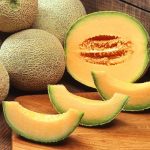The FDA defines a natural flavor as a substance derived from a spice, fruit, vegetable, yeast, herb, meat, seafood, poultry, eggs, dairy products, or fermentation products that is used to impart flavor rather than add nutritional value. Examples include essential oils, oleoresins, essences and extracts, protein hydrolysates, and distillates produced through roasting, heating, or enzymolysis.
In the U.S. and Europe, over 2,500 different flavor substances have been isolated. In spite of the fact that “natural flavors” may be made up of any ingredient used for flavoring, they are all grouped together under the same designation. Among the 80,000 foods in the Environmental Working Group’s Food Scores database, “natural flavors” is placed fourth in terms of frequency of use.
Why are natural flavors used?
What is the significance of using natural flavors in such a wide variety of products? In summary, producers are of the opinion that their products improve the flavor of food, which leads to increased sales. In many situations, they also serve as a less expensive way to hide the unpleasant flavor of the food.
For instance, ripe fruit may have a delicious flavor. If a farm collects its produce when it’s still immature and transports it over a great distance of 10,000 miles, it is likely to not lend any flavor, color, or sugariness when it’s consumed.
If a business adds a generous measurement of sugar, a few natural flavors, and potentially food coloring, the food they make will be both sweet and full of flavor, as well as brightly colored. The end product is not an ideal replacement for actual nourishment, yet these techniques can be financially beneficial, and most buyers will be taken in.
Creating these substances is big business. The food industry brings in “flavor scientists” to copy the flavors of food and make them more delicious and even habit-forming for those who eat them.
Basically, these flavorings are used to make you want to return for additional servings.
Natural flavor definitions vary around the globe.
The natural flavor components used in the United States are not the same as those utilized in the European Union. In the European Union, flavors must come from a vegetable, animal, or microbial source and must be produced by traditional food preparation methods. In the United States, natural flavors could be any of the following: an essential oil, oleoresin, essence, extractive, protein hydrolysate, distillate, or a product created through roasting, heating or enzymolysis.
The natural flavors in other countries differ still more. In India, all food colorings need to come from vegetables only, and any type of microbial transformation is prohibited. In Japan, flavors derived from natural sources are limited to plants and animals. In Canada, any flavoring not originating from plants, animals, or microbes must be described as “artificial flavorings”. In 2002, revisions to the regulations in Australia and New Zealand eliminated any mentions of natural flavors, therefore it is not possible to discriminate between artificial and natural flavors anymore.
Difference between Natural Flavors and Artificial Flavors
Surprisingly, natural and manufactured flavors have a lot of similarities. Synthetic and natural flavors are often created in a laboratory context, but artificial flavors come from unedible petroleum and other elements, whereas natural flavors are usually derived from edible sources.
Chemically, there is not a substantial discrepancy between natural and artificial flavors; they are composed of the same molecules. The distinction between the two is mainly apparent from their separate productions, where the primary ingredients used can distinguish them.
In order to reproduce a natural taste without actually utilizing the identical food, flavor engineers try to locate lower-cost sources that parallel the natural food’s molecular design.
In certain cases, flavorings that are utilized in foods do not actually come from the flavor they’re meant to emulate. An illustration of this is McDonald’s beef tastes, which are obtained from milk, wheat and other ingredients.
African violets could also be used to make “watermelon” flavorings, and Essential oils from grapefruit can be used for the production of the so-called “passion fruit” taste.
Genetically-altered yeast that has gone through the fermentation process is frequently employed in order to create the tastes of “vanilla” and “saffron”.
Synthetic vanillin taste is commonly created from substances called guaiacol or lignin, which originate from purified wood tar or tree sap – or wood cellulose. In many situations, the base is often thinned down and combined with other aromas and fragrances that were artificially produced.
Eventually, a great deal of natural flavors go through extensive processing and have numerous synthetic additives. It is conceivable that there are up to one hundred distinct compounds present in a single natural flavor.
Organic Natural Flavors
In order to obtain certification as organic, natural flavoring must consist of a minimum of 95% organic base elements. The composition should not have more than 5% non-natural ingredients.
It also cannot be made using synthetic extraction solvents. No synthetic additives or synthetic preservatives are allowed. Organic, non-GMO flavours that have been certified are not produced using ionizing radiation.
The key benefit is that the majority of elements used are produced naturally.
According to the USDA, organic natural flavors must be from natural sources that are 95-100% organic and unaltered by chemical methods. Furthermore, production cannot involve synthetic solvents or artificial preservatives.
Organic natural flavors must not have any of the following components: propylene glycol, polyglycerol esters of fatty acids, mono- and di-glycerides, benzoic acid, polysorbate 80, medium-chain triglycerides, BHT, BHA, or triacetin.
Organic natural flavors offer some benefits, however they might still have certain undesired elements in them.
Consuming Natural Flavors
The foundation of natural flavors must come from either vegetable or animal matter. Nonetheless, natural flavors can be intensively handled and contain plenty of chemical elements.
In a few instances, natural and artificial flavors have similar chemical makeups and health impacts. When it comes to keeping yourself healthy and safe, aim to purchase fresh or frozen whole foods as much as possible.
Food producers have to identify flavors in their ingredient lists, but there is no demand for them to share the original sources or combinations of chemicals used for these flavors.
You can reach out to the food company by telephone or email to ascertain the source of the natural flavors in a food item and what chemicals it may contain.
The Environmental Working Group, a nonprofit research group, states that the combination of flavors in certain products may contain more than one hundred different chemicals aside from their basic taste, such as preservatives, solvents, and other components.
These are defined as “incidental additives”.
It is not obligatory for food makers to tell if the ingredients they add come from natural or man-made sources. As long as the starting substance for flavouring is derived from either animal or vegetable matter, it can be labeled as a natural taste.
Furthermore, due to the absence of a set meaning of “natural,” flavors stemming from genetically modified plants can be labelled as such.
The phrase “natural” does not have an exact meaning, yet it is regularly assumed to mean beneficial to one’s health. Although natural and artificial flavors originate from different places, both contain added compounds.
Food chemists have created hundreds of different natural flavors. Here are a few that are commonly found in foods and beverages:
- Amyl acetate. This compound can be distilled from bananas in order to provide banana-like flavor in baked goods.
- Citral. Also known as geranial, citral is extracted from lemongrass, lemon, orange, and pimento. It is used in citrus-flavored beverages and sweets.
- Benzaldehyde. This chemical is extracted from almonds, cinnamon oil, and other ingredients. It is frequently used to give foods an almond flavor and aroma.
- Castoreum. A somewhat surprising and unsettling source, this slightly sweet substance is found in the anal secretions of beavers. It is sometimes used as a substitute for vanilla, although this is rare due to its high cost.
Other natural flavors include:
- Linden ether: honey flavor
- Massoia lactone: coconut flavor
- Acetoin: butter flavor
Synthetic chemicals can replicate these flavors, and they would be labeled as artificial if that were the case.
You could have observed that, in the majority of cases, the components on product labels point out that the food has been constructed using both natural and artificial flavors. Hundreds of ingredients are classified as natural flavors. Using natural and artificial flavors together is also common.
Opting for food items with natural seasonings as opposed to those with fake flavors may seem like a more beneficial option. Despite some distinct differences, the chemical make-up of the two is strikingly alike. The substances used to give a particular taste can be sourced from nature or artificially made.
It can be noted that, in some cases, artificial flavors include fewer chemicals than their natural equivalent.
Additionally, certain organizations devoted to supporting a cause have held that artificial flavors are safer since they are created in well-regulated laboratory settings.
Manufacturing companies are more inclined to use artificial flavors because they are more cost-effective to create. Moreover, those who live a plant-based lifestyle may be consuming animal-derived natural flavors without even realizing it in pre-prepared meal items.
In general, natural flavors do not seem to be any more beneficial than synthetic flavors. Although they stem from organic sources, natural flavors virtually parallel artificial flavors. Artificial flavors may even have some advantages.
The Safety of Natural Flavors
Prior to including either natural or man-made flavors to edibles, they must be examined to make sure that they abide by the safety protocols.
The outcome of this assessment is made public and given to the Food and Drug Administration. If the flavoring is established as safe, it can be incorporated onto the collection of components that have been declared “Generally Recognized as Safe” and do not require further assessment by the FDA. Additionally, the majority of natural flavors acknowledged to be safe through this process have furthermore been inspected by different international authoritative bodies, for instance the European Food Safety Authority.
Certain segments of the population have made claims that FEMA has not revealed details regarding the security of natural flavors, though majority opinion holds that when consumed within reasonable limits, these flavors can be safe. Despite this, it is possible that certain individuals may be sensitive to the various chemical compounds present in natural flavorings, leading to adverse reactions. It is essential to be conscious of the elements of the organic flavors you eat, particularly in case you have any dietary issues or food sensitivities.
The Food and Drug Administration’s Food Additives and Amendment Act of 1958 specifies that the FDA must confirm the safety of any new food additive, such as flavoring, prior to its use in food products. The FDA avoids making a decision relating to flavorings by giving permission to the majority of them to be labeled as “generally recognized as safe” (GRAS).
The trouble is, GRAS substances are not really regulated. These ingredients can actually bypass any FDA safety reviews. This is a system which allows the producers to determine that a component is harmless without anyone else’s input. The icing on the GRAS oxymoron cake? Manufacturers can utilize a substance in food without notifying the FDA.
It is correct that the FDA may not be aware of the presence of any certain chemical if the manufacturing company failed to inform them of its existence, without facing any obligation to do so. Certain specialists guess that the FDA may be in the dark about roughly one thousand ingredients being used in the food industry.
Essentially, firms should ascertain that ingesting the flavoring in quantities that humans usually eat would not bring about dangerous health effects.
The decision is usually made based on an study conducted by the business itself or through a “specialist panel” that the company puts together at its own choice, usually made up of people who work for the organization or are employed as consultants. Once the board of directors has completed their adjudication, the business still has the authority to decide if they will reveal the outcomes to the US Food and Drug Administration.
In addition, the Government Accountability Office issued a study in 2010 indicating that determinations concerning whether to put an element on the GRAS record can morally be affected by financial or commercial affiliations. The FDA has protocols in place for avoiding issues of bias with its own personnel and committees, but these rules have no bearing on privately-formed panels whose purpose is to achieve consensus on GRAS decisions.
Put another way, when there is a potential for profit, businesses can find ways to legally justify their decisions, regardless of any issues that put the public’s wellbeing at risk.









